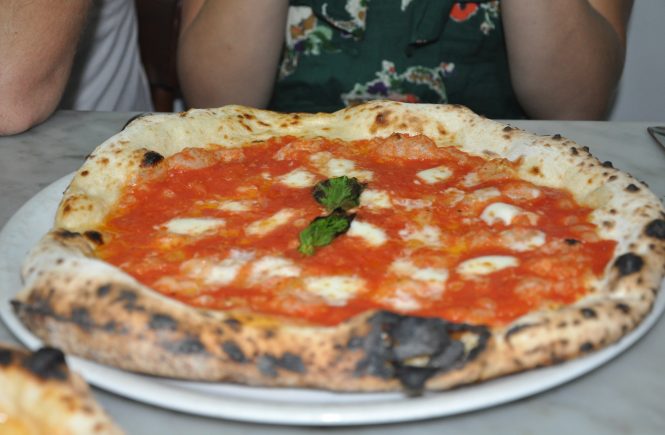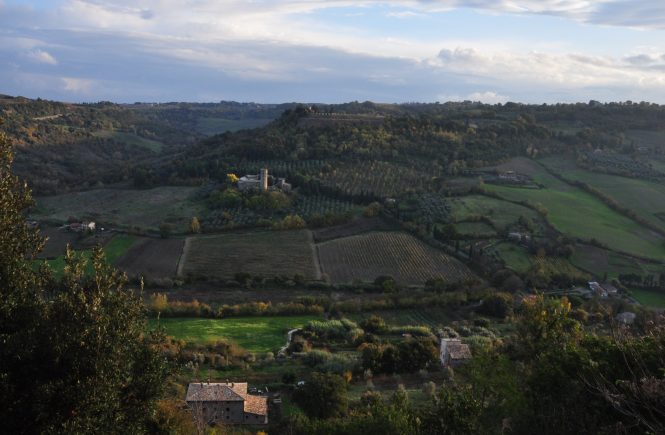The "heel" of the boot of Italy, Puglia is one of the country's most beautiful regions. It's got it all: miles of gorgeous coastline (and beaches), fantastic food, friendly locals, lovely little towns with medieval historical centers. And, while Italians flood Puglia's beaches in August, during the rest of the year, even Puglia's most resort-like towns are relatively quiet. At least compared to, say, the Cinque Terre or Amalfi coast.
Soon, though, all that will change. Travelers beyond Italy are catching onto Puglia's charms, from, just this year, writers for Travel + Leisure to the "Frugal Traveler" for the New York Times. So I knew I had to go… now.
To really explore the region, you'd need at least a week and a car. My father and I had neither. (We could have rented a car, but Dad wasn't particularly keen on spending his vacation behind the wheel, and since I haven't even been behind a wheel in years, getting my feet wet on back roads in the Italian countryside didn't seem like a great plan).
We had a great three-day trip. We ate well, visited important sites, relaxed at the beach, and explored a couple of truly beautiful towns. So don't let anyone tell you you simply can't do Puglia as a short trip from Rome, by train. If you have to, you can.
First stop: Bari. More posts to come!
Day One in Bari
It's hard to find many people who are in love with Bari; even Italians get a slight crinkle in their nose when the city is mentioned. When tourists come, it's mostly because they have to — it's a big hub not only for Puglia, but for ferries to Albania, Croatia and Greece, not to mention lots of Mediterranean cruises.
And, yes, there are things about Bari that aren't fantastic. Much of the city is built-up and modern, for example, so if you're looking for something that strikes you as idyllic and medieval as soon as you step off the train, you're in the wrong place. More than anything else, this is a working town. You know. One not based primarily on tourism to survive.
That said? Bari is incredibly lively (despite loving how, in small towns across Italy, full families, teenagers, and old men take to the piazzas every evening to stroll and chat, I'd never seen quite as many people do this as in Bari). It has a lovely, labyrinthine centro storico, even though it takes a bus ride or a half-hour walk to get there from the train station. The people are super-friendly. And there are some sites that are actually pretty important.
Overall, it's not a bad launching-point for explorations into more southern parts of Puglia. (For its love-it-or-hate-it quality, as well as the atmosphere, Bari reminded me a bit of Naples).
To get there from Rome, we hopped the fast train, which took four hours and cost €51 one-way. (If you book far enough in advance to take advantage of a MINI fare, you can snag a ticket for €41). The slowest train costs just €36, but takes 6.5 hours. Ouch).
Getting to Bari by train was pretty easy. Promptly after arriving, we spent some 30 minutes sitting on a bus, waiting for it to start, and then another 45 minutes wandering, lost, around the gorgeous but incredibly confusing centro storico. (Told you it was labyrinthine). Supposedly, it was designed that way to perplex Saracenic invaders. It must have worked pretty well. But we finally found our B&B, "La Uascezze". Luckily, it was lovely, super-clean, and complete with a small kitchen, all for €80 per night.
We spent the rest of the afternoon wandering—more!—around the centro storico. Although I'd been looking forward to kicking off with some proper Pugliese food, though, I'd made the terrible decision to get to Bari on a Monday… which meant that almost all of the non-touristy restaurants were closed. So be warned.
Still, we were able to explore Bari's famous churches, including the 12th-century Church of St. Nicolas of Bari, home to the relics of the saint himself (above), and the Cathedral of San Sabino, built to Bari's first patron saint before Nicolas knocked him off his pedestal (below). 
We even popped into the Castello Normanno-Svevo. Also 12th-century, the castle has belonged to everyone from Norman king Roger II to Holy Roman emperor Frederick II; Bona Sforza, queen of Poland, lived here in the 15th-century, and the king of Naples later turned it into a prison. Only hints of its former residents are left today, but it's still a treat to be able to walk through the imposing fortification—for only €2 each.
Bari had its atmosphere, and the centro storico and churches were definitely lovely. But after a full afternoon and evening, we were ready to head to our next destination: Polignano a Mare. Stay tuned for the next post!





























